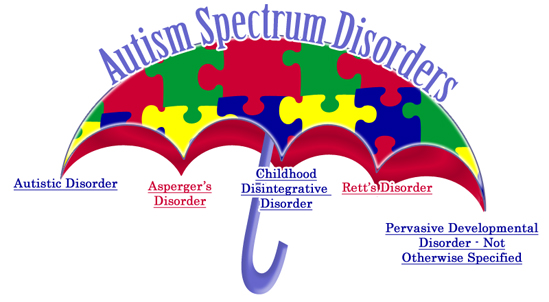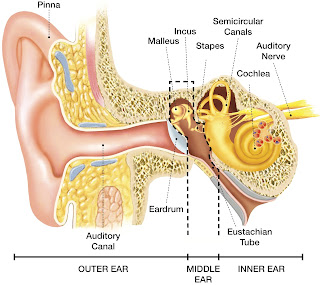Today I’m going to talk more about the different types of hearing aids that a person with a hearing difficulty can use,you can't wear a hearing aid as you like,
An Audiologist is a person who can dispense a hearing aid for you,
However, the type of hearing aid is not the only parameter that audiologists focuses on before dispensing a hearing aid. Age,type of the hearing loss,degree of hearing loss,economical statuses…all of them matters
1) Body Worn Hearing Aids
These are the largest type of hearing aids.As implied by their name, they are worn
somewhere on the body in a pocket,pouch around neck or on the belt.The receiver usually plugs into an earmold custom made for the
individual’s ear canal and concha.
Features
· The circuitry is analog and may be
linear(1:1) or compression.
· Uses AA batteries which have a battery
life of approximately 4 weeks
· Has a volume wheel
· Optional features of a telecoil(to hear the magnetic siganl naturally genetare in an older telephone),and
direct auditory input (DAI)
· Omnidirectional microphone only
Advantages:
- Earmold does not distort the cartilage of the ear
- Controls are easy to manipulate
- Appropriate for all types of hearing loss
- Highest power available, for severe and profound losses
- Feedback is less of a problem because of the separation of the microphone and speaker
Disadvantages
- Cumbersome for the parent to place, remove, and use the body aid with infants
- Rustling of clothing and body noise are amplified
- Although amplification may be routed to one or both ears, the body aid can only be set for the hearing loss of one ear.
- Difficulty in localization
- Body baffle effect( Body act as a barrier to pass the sound)
- Inconvenience of a cord going from the body aid in your pocket
- cloths noise and wind noise
- Old technology
- The next smallest type of hearing aid is behind the ear aids which are the largest of the
- common types of hearing aids.
- This device has a module that fits behind the ear
Advantages
- The hearing aid fits over and behind the ear, so there is a great amount of flexibility as to what size or type of earmold fits in the ear or ear canal
- Ear molds can be made of hard of soft materials,can be modified or changes at will and for less expense that remarking the shell of an in the ear type aid
- Can be used for severe and profound hearing losses
- Feedback is less likely
- Sometimes less expensive than in the ear type aid
- More option can be selected such as connection for assistive listening devices,and more recently,attachments for bluetooth technology
- Larger controls and battery size are available
Disadvantages
- Some people find having a hearing aid that must go both in their ear (the mold) and behind their ear (the aid) to be cumbersome and difficult to put on and use.
- BTEs are more visible for those without much hair
- BTEs can be more inconvenient for physically active people
- BTEs are more susceptible to mositure and perspiration damage
3)RECEIVER IN THE CANAL (RIC)
- currently, there is a trend in the hearing aid industry toward smaller and more discreet hearing aids, including the recent development of open fit hearing aids (also known as open ear hearing aids).
- Open fit hearing aids have one major limitation, however; they are not appropriate for many people with a more severe hearing loss
- Best used by those with high frequency hearing loss and normal low frequency hearing.
Advantages
- Help 90% or more of hard-of-hearing
- Low visibility
- Get an instant fit as no custom step required
- Improved ear ventilation
- Natural low freq sounds enter ear
- Greatly reduced occlusion effect
- High freq AND/OR low freq boosted
- High power o/p possible if needed
- Very comfortable fit
- Same day fitting possible
- Ideal all Mild to Severe hearing loss
- For a wide range hearing loss would be a maximum of 60dB in the low frequencies
- 80dB in the high frequencies.
4)IN THE EAR HEARING AIDS (ITE)
- Most ITE aids are custom devices,with the components built into a shell made from an impression of the user's ear
- ITE aids are further divided into full concha & Half concha
- Full concha aid fills the entire concha, and is the most common type
Patients with greater than 70 dB hearing loss may experience feedback problems with ITE devices, because the microphone is adjacent to the receiver.
Advantages
- Has better retention in ear since it can lock in place in the outer ear.
- Room for a large vent, to reduce occlusion.
- Room for advanced circuitry and circuit options
- Easier to handle and adjust
- Usually less expensive the canal aid or CIC
Disadvantages
- ITEs are in the ear, but they can be seen easier than the ITC and CIC
- Higher repair rate than BTE, because of wax getting into speaker
5) IN THE CANAL HEARING AIDS (ITC)
- In-the-canal (ITC) hearing aid is similar to the ITE device, except the components are small enough to fit entirely within the external auditory canal.
- ITC hearing aids are custom-molded
- High cosmetic appeal
Advantages
- Reduced gain / output requirements.
- Cosmetically more appealing
- Greater high frequency gain
- Improved performance in noise
Disadvantages
- More prone to repairs when compared to BTE
- Maximum output is less when compared to BTE therefore cannot aid severe degree of hearing loss
- Difficulty in inserting and removing specially for patients with dexterity problems
6)COMPLETELY IN THE CANAL (CIC)
- The CIC hearing aids were introduced in early nineties and have succeeded the ITC as the tiniest, least visible hearing aid
Advantages
Small
and discreet for cosmetic purposes
-
· Efficient in delivery of high frequencies. (Outer ear collects and focuses high frequency sound waves to the opening of the ear canal).· You may be able to use a telephone or headsets normally, because the aid is recessed in the ear.
- Sound can be reproduced without driving the speaker into distortion, as speaker is near the eardrum
Disadvantages
- Most expensive ,because of small size .
- Usually too small to having a volume control that can be used while in the ear.
- Not appropriate for severe to profound hearing losses.
- Not appropriate for high frequency (ski-slope) type hearing loss. (Too much occlusion)
- Not suggested for children, as their ears grow too fast
- Difficult to use and operate for persons with dexterity or eyesight problems.(Small size and battery)
- Highest repair rate compared to other hearing aid types.














